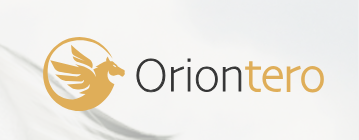What is margin in trading

In the world of finance, the term margin has several meanings. This concept exists both in regular business and in Forex trading. In the latter case, it has several meanings.
What is “margin” in trade in goods and services
In ordinary business, the word “margin” means the difference between the price of a product (service) for buyers and the cost (purchase price, in case of resale). It is sometimes confused with a markup. But the calculation formulas are different.
In businessmargin is the result of the formula: (cost – cost) / cost * 100%. She:
- can never be more than 100%;
- shows what percentage of sales proceeds represents profit.
In the markup there is another forum: (cost – cost) / cost * 100%. This figure may be more than 100%. In most cases, goods have a free price on the market. Therefore, manufacturers and suppliers can provide themselves with the markup they want.
A commentRating Forex: сThe free price is the cost (tariff) formed by the manufacturer, supplier or together with the buyer. It differs from regulated in that the state does not control it.
What is “margin” on the stock exchange
In stock trading, you can buy assets on the derivatives and spot markets. There is a difference between selling and buying prices. This is the margin on the exchange.
Commentary Rating Forex: difference between sale and purchase prices will always be. Because in cases where the purchase and sale prices are the same, orders with them overlap each other.
IN stock trading has variation margin. It is used in the derivatives market. It is credited or debited from the trader’s account as a result of clearing, which is carried out 1–2 times a day. It happens something like this: a person buys a futures contract, which grows in price. Clearing is in progress. The increase in the value of the asset is added to the trader. If the instrument, on the contrary, has fallen in price, funds are debited from the account.
How variation margin is calculated depends on the specific instrument. Everyone has their own formula. It may include the value of the asset in foreign currency, take into account its fluctuations and conversion into another currency.
Formulas for calculating variation margin can vary greatly from instrument to instrument. This must be taken into account when opening long-term transactions in derivatives markets.
What is “margin” in margin trading
The retail Forex and CFD market is somewhat different from classical exchange trading. Because there are only derivative financial instruments there. Transactions with them are opened in two directions. Positions must be opened and closed.
The difference between the cost of buying and selling is called the “spread”. This is another difference from classic exchanges. That’s why many people confuseWhat is “margin” in speculative trading.
Trading in retail Forex and CFD markets involves opening transactions with leverage. For example, if the leverage is 1:10, a trader can use $100 to open a position of $1000. This $100 is the answer to the question “What is margin?” Essentially, this is collateral, a collateral that a trader must use to open positions.
Margin is used to cover risk. That is, if the transaction turns out to be unprofitable, the losses will first be written off from the collateral. If it is not enough, the loss will begin to absorb the leverage.
Margin call, stop out
Brockers do not want to lose the money they give to traders to open positions. Therefore, in addition to margin, trading has a margin requirement (margin call). This is a percentage of the deposit.
If the deposit balance is less, the trader will be asked to top up the account. That is, add margin. If he does not do this, the broker will try to close the position that threatens the leveraged funds he has issued.
There is a stop-out. This is also a percentage of the margin. It means the level at which the position will be forced to be closed.
Rating Forex Commentary: Understanding margin, margin calls and stop outs is critical to money management. If a trader chooses the wrong trading strategy, he can lose everything on his deposit due to one unsuccessful transaction.
How is Forex Margin Calculated?
Leverage is indicated as a proportion (example: 1:50). Margin is a percentage. It is calculated as follows: the position volume (lot) is multiplied by the contract size and divided by the leverage.
For example, with a leverage of 1:50, for every $50 of leverage, the trader should have $1 on deposit. Accordingly, with a leverage of 1:50, the margin will be 2% of the transaction size.
It is necessary to take into account: losses or profits are not divided by the size of the leverage. They come from the trader’s deposit. Therefore, margin trading is a good option for dispersing capital. However, it carries a very high risk.
Free margin
If there is money in a trader’s account that is not reserved for opening a position, this is free margin. It can be used for new positions. The calculation formula may seem simple: equity – margin. But it is not so.
Have equity There is also a separate formula. This is a balance sheet taking into account floating income and losses. The balance represents the amount of the deposit + profit – loss. So the complete formula for free margin looks like this: ((deposit + profit – loss) + floating profit – floating losses) – margin.
The main thing in all this is that floating profits can be used to open new positions. It represents the profit that is in an open transaction.
For example, a lot of an asset was purchased for $1000. Now it costs $1010. Here $10 is a floating profit. It can be used to open a new position.
At the same time, floating losses also affect equity. Therefore, if there is a losing position, the minus on it will be taken into account. New transactions can be opened for a smaller amount than the account balance.
What types of margin are there?
In different markets, with different brokers, you can find two types of margin as collateral:
- cross margin;
- isolated margin.
Each has its own pros and cons. They need to be taken into account when choosing markets and brokers.
Cross margin
TORoss margin is the ability to use the entire deposit to secure transactions. For example, if a loss on one position is close to consuming the collateral allocated to it, free margin comes into play. The position remains open.
This type of margin makes it easier to wait out negative trends in the market. Even after a deep minus (exceeding the initial margin), the trader has the opportunity to make money when the trend reverses.
Since for free margin is used for calculations; profit on open profitable transactions adds liquidity to the account. This makes it possible to obtain a diversified portfolio and minimize risks.
Let’s talk about the lack of cross margin. It is very significant: one unsuccessful transaction can burn the entire deposit. Most often this happens when only one position is open. In this case, the loss consumes almost all the capital in the account until it reaches a margin call or causes the position to be closed by a stop out.
If there are several transactions, a loss-making one can absorb all the free margin. There will be no additional collateral for other positions. Even the profit is liquidated. All that remains for the trader is the margin on open orders.
Most Forex brokers and dealers use cross margin. This is why 76% of traders lose their entire deposit. A sharp price jump in the presence of wide leverage easily burns money.
Isolated Margin
A fixed amount is allocated for each position. If the amount of losses exceeds it, it is simply closed.
The main advantage of isolated margin is limiting losses. It’s definitely not possible to lose your entire deposit. The biggest disadvantage is the high risk of liquidation. Forex assets are very volatile. They can greatly change the price over a wide range. This leads to rapid absorption of allocated collateral and losses on the transaction.
Trading with isolated margin is recommended for beginner traders. They will keep their deposit longer and will not lose everything on unsuccessful transactions.
Cross margin – an option for professional and institutional traders who know how to balance their portfolio and manage risks. In addition, they have enough capital to cover open orders.
Iisolated margin is found on cryptocurrency exchanges when trading derivative
Related News

Withdrawing a token from Empires Battle bot (t.me/EmpiresBattleBot)
🆕️ News about withdrawing money from Empires Battle bot: how long to wait for […]
Read more
Withdrawing money from Bird Ton (t.me/BIRDTonBot)
🆕️ News about the withdrawal of a token from the Bird Ton crypto game: […]
Read more
Refund from Uniswap (uniswap.org)
🆕️ News about Uniswap exchange: reviews about withdrawing money, blocking crypto wallets 🔴 Be […]
Read more
How to get money back from Sushiswap (sushi.com)
🆕️ News about a hacker attack on Sushiswap: how to get money back from […]
Read more
Refund from TON Wallet Telegram (ton.org)
🆕️ News about the TON wallet in Telegram: reviews of money theft, how to […]
Read more
Refund from METAMaSK (metamask.io)
📤 Ways to withdraw money from METAMaSK: customer reviews and real stories, problem solving […]
Read more

















